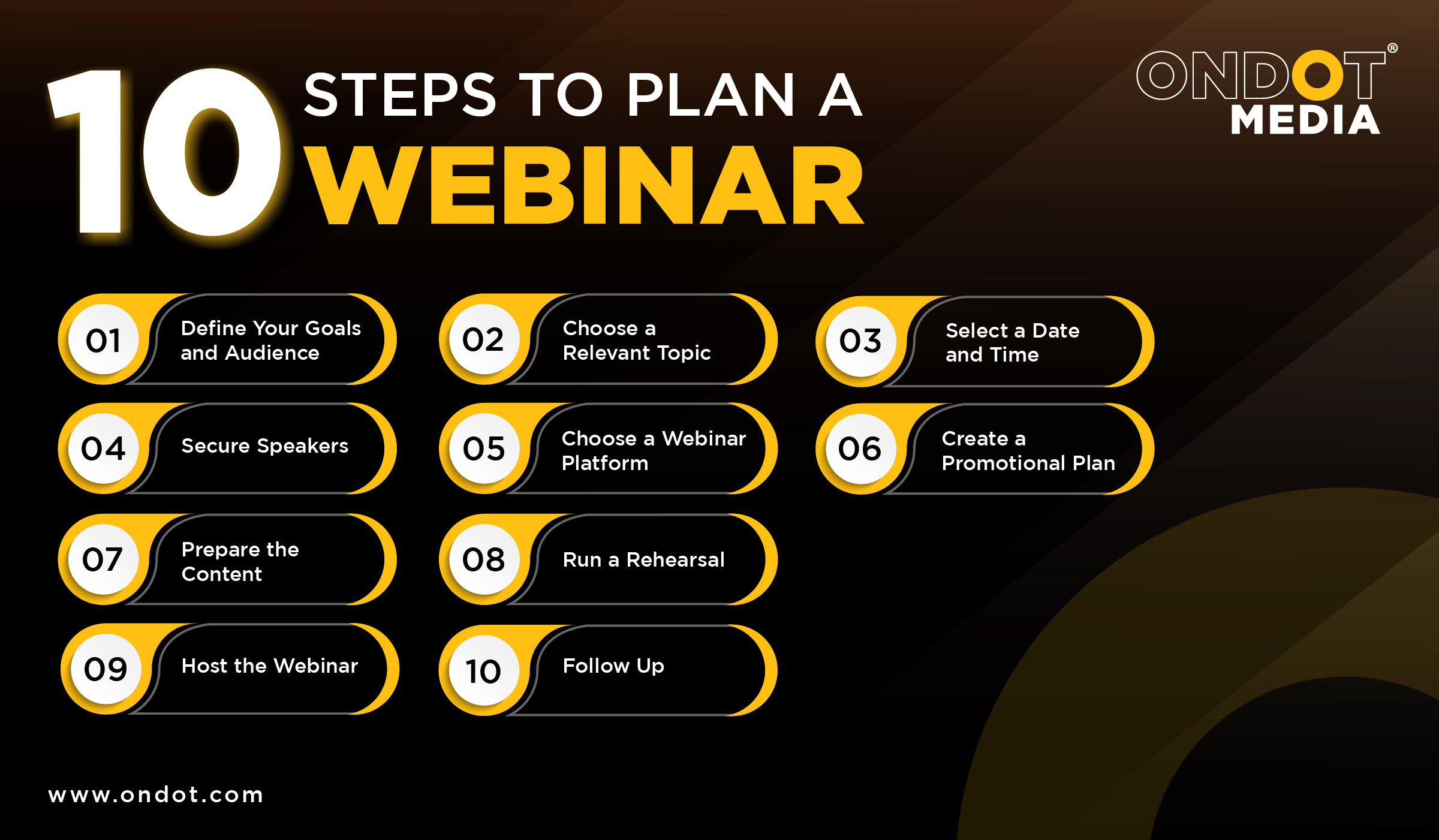Today, webinars have become a critical part of marketing communications, especially for B2B outreach. Here are some detailed strategies for planning, promoting, and executing successful webinars and virtual events. These will help marketers engage and educate B2B audiences.
Digital spaces are fast becoming the platform of choice for most B2B enterprise activity. It is no surprise that marketing is also rapidly going offline.
Five years ago, onsite events were all the rage, but they have given way to virtual discussions, seminars, and events, generously referred to as webinars.
The pandemic era was a driver for this business model. Online is where experts can discuss products, solutions, and business strategies from remote locations. This has quickly become a sterling marketing strategy.
Today, webinars are a critical part of a marketing outreach strategy. They have become a powerful tool for seamless global interaction. They are also an extremely efficient way to showcase solutions and discuss them threadbare for industry exposure.
A well-planned and smartly executed webinar is worth many standalone outreach strategies. Here are some ways to plan and deliver an impactful webinar for the most effective marketing.

Planning for a Successful B2B Webinar
- Define the purpose of the webinar.
Establish clear goals for the virtual event you are planning.
- What is the objective?
- Are you looking to educate your customers or market?
- Are you holding this event to generate more leads for your brand or a client?
- Or are you holding this event to showcase a new product or solution?
With this clarity, it is easier to plan the structure of the webinar.
If it aims to generate leads, plan it around a presentation that encourages customer or prospect interactions. To create a virtual event or webinar that intends to showcase a product or solution, start with a workshop format, where a story can be built.
Identify the industry pain point and showcase how the new solution helps eliminate it! This interactive webinar gets all the right responses and creates an interest in a new product. It creates a hype that no other marketing communication can.
- Define the target audience.
Effective communication is possible only if the target audience is identified.
Chart out the audience by demographics, interests, and level of expertise. This will make deciding on the communication style easier.
One smart way to do this is to create several personas that can be the guide for your communication structure;
- What would they enjoy?
- How much attention can you expect from them?
- What is their depth of knowledge?
- Where are they in their career journey?
- Are they targeted customers? If so, how much of the issue do they understand?
- How much value can the webinar add to your communication?
Based on these, creating more effective strategies to run a webinar that the audience can relate to, is easier.
It is also easier to refine the messaging very well.
- Identify the Topic for the webinar.
Remember, the webinar topic is the cornerstone of its success.
The next step is to select a relevant topic. The business goal of this webinar and insights into the target audience will help here.
If you are looking to launch or sell a product, it’s a bit easier. This is because the market space gets limited to topics relevant to the solution.
Deep research will get you to the current discussions around the topic.
- What is it that everybody wants to know?
- What is the quality of the answers they are getting?
- Can you provide a better answer that will get more traction?
- What issues are floating around in that space?
- Can your discussion help to resolve them?
This way, we can get you customers for your product or solution.
What topic will help grab your targets’ interest and resonate with them? They need to sit through the virtual event and continue to engage with your product.
So, the topic must be extremely relevant to their interest.
- Identify the Webinar Format
You can choose from several formats. Again, this would depend largely on the event’s focus and the target the nature of the target demographic.
If it’s a mature audience, they can thoroughly discuss every facet in a discussion.
To decide the best format, marketers need to study:
- The levels of interaction required,
- the topic’s complexity, and
- the speakers’ expertise level.
If there is expert participation, a Q&A format works, too. They can also share presentations so that the content flows with the audience.
Otherwise, a simple single SME lecture can work as well. It’s great to also invite the audience for interaction after its delivery. This ensures interactivity and will keep the audience interested in listening to it.
It can also be a panel discussion with an expert moderator. This expert can keep the conversation going with observations and queries. At the end, there can be time allotted for an interactive Q&A session,
Some freebies like graphics, process workflows, etc., shared in the presentation will retain interest and motivate discussions even more.
It is critical to analyze the focus, audience, and platform before deciding on the webinar’s format. Once that is done well, the foundation is strong

Add a Comment